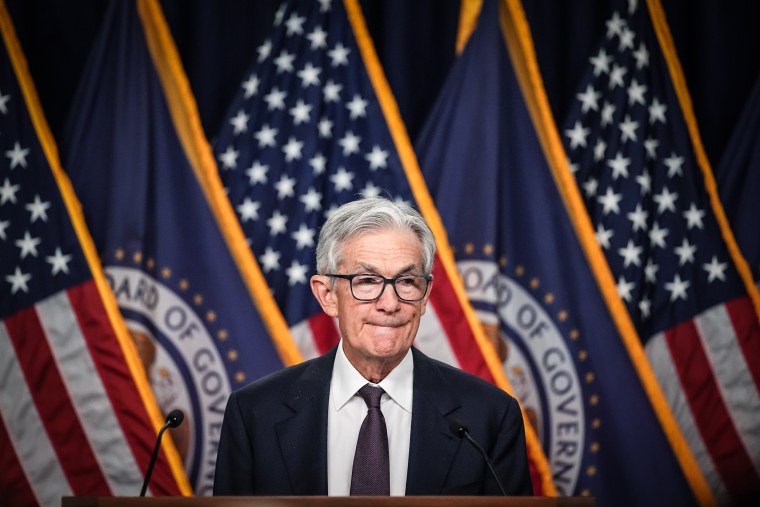Now Reading: Supreme Court grants Trump request to fire certain independent agency members, says Federal Reserve is different
-
01
Supreme Court grants Trump request to fire certain independent agency members, says Federal Reserve is different
Supreme Court grants Trump request to fire certain independent agency members, says Federal Reserve is different

WASHINGTON — The Supreme Court on Thursday granted a Trump administration request that allows the president to fire members of independent federal agencies while suggesting that its legal reasoning would not apply to the Federal Reserve.
The move to pause a lower court ruling formalizes a temporary decision along similar lines on April 9 that allowed President Donald Trump to fire Gwynne Wilcox, a member of the National Labor Relations Board, and Cathy Harris, a member of the Merit Systems Protection Board.
“The stay reflects our judgment that the government is likely to show that both the NLRB and MSPB exercise considerable executive power,” the court said in an unsigned order.
The government, it added, “faces greater risk of harm from an order allowing a removed officer to continue exercising the executive power than a wrongfully removed officer faces from being unable to perform her statutory duty.”
The high court’s three liberal justices dissented.
In a notable passage, the court sought to distinguish the case from any attempt by Trump to fire members of the Federal Reserve, including its chairman, Jerome Powell. The court noted that the Federal Reserve is a “uniquely structured, quasi-private entity” that has its own distinct historical tradition.

The Supreme Court’s comments are likely to be well-received in global markets, which were rocked when Trump repeatedly ripped Powell in late March and early April, leading to speculation that he might try to fire him. Trump went so far as to say on Truth Social on April 17 that Powell’s “termination cannot come fast enough!”
Trump later appeared to back off, saying he had “no intention” of firing Powell.
Powell also came under fire repeatedly during Trump’s first term, even though Trump himself nominated him for the role in November 2017.
Follow live politics coverage here
Justice Elena Kagan, writing for the dissenters, said the court had in essence summarily overruled a key 1935 precedent, Humphrey’s Executor v. United States, which upheld the concept of independent agencies that are not directly subject to presidential control.
In challenging that precedent, Trump decided “to take the law into his own hands” by firing Wilcox and Harris for no discernible reason, she added.
“Today, this court effectively blesses those deeds. I would not. Our Humphrey’s decision remains good law, and it forecloses both the President’s firings and the Court’s decision to award emergency relief,” Kagan wrote.
She expressed puzzlement at the court’s effort to create an exception for the Federal Reserve, arguing there is no reason the same legal rationale would not apply to it.
“If the idea is to reassure the markets, a simpler — and more judicial — approach would have been to deny the president’s application for a stay,” Kagan added.
The case tees up the significant legal question of whether Congress, when it sets up federal agencies, can include provisions to insulate them from political interference that prevent the president from firing members at will.
Although the Trump firings concern only two agencies, any ruling that allows such firings would apply to other agencies, too.
If that happens, it would raise the question of whether the president would have the power to fire members of the Federal Reserve, which traditionally operates independently of the White House.
In recent rulings, the Supreme Court, which has a 6-3 conservative majority, has decided that provisions protecting single heads of independent agencies were unconstitutional. But the 1935 precedent that upheld the structure of multimember agencies remains on the books.
The Trump administration has adopted legal arguments long made by conservative lawyers who favor broad presidential power; those arguments hold that independent agencies are not sufficiently accountable to the democratically elected president under the Constitution’s separation-of-powers provision. The president should be able to fire agency heads at will, they argue.
Then-President Joe Biden appointed Wilcox to the labor board, which adjudicates workplace disputes, in 2021. Her five-year term would have expired in 2026. Federal law states that the president can fire members only “for neglect of duty or malfeasance in office.”
Biden appointed Harris in 2022 to a seven-year term that has similar protections against removal. The Merit Systems Protection Board handles disputes involving federal employees.
Trump sought to fire both soon after he took office.
Wilcox and Harris both sued and won in lower courts, prompting the administration to go to the Supreme Court.
Lawrence Hurley reported from Washington and Steve Kopack from New York.
















































